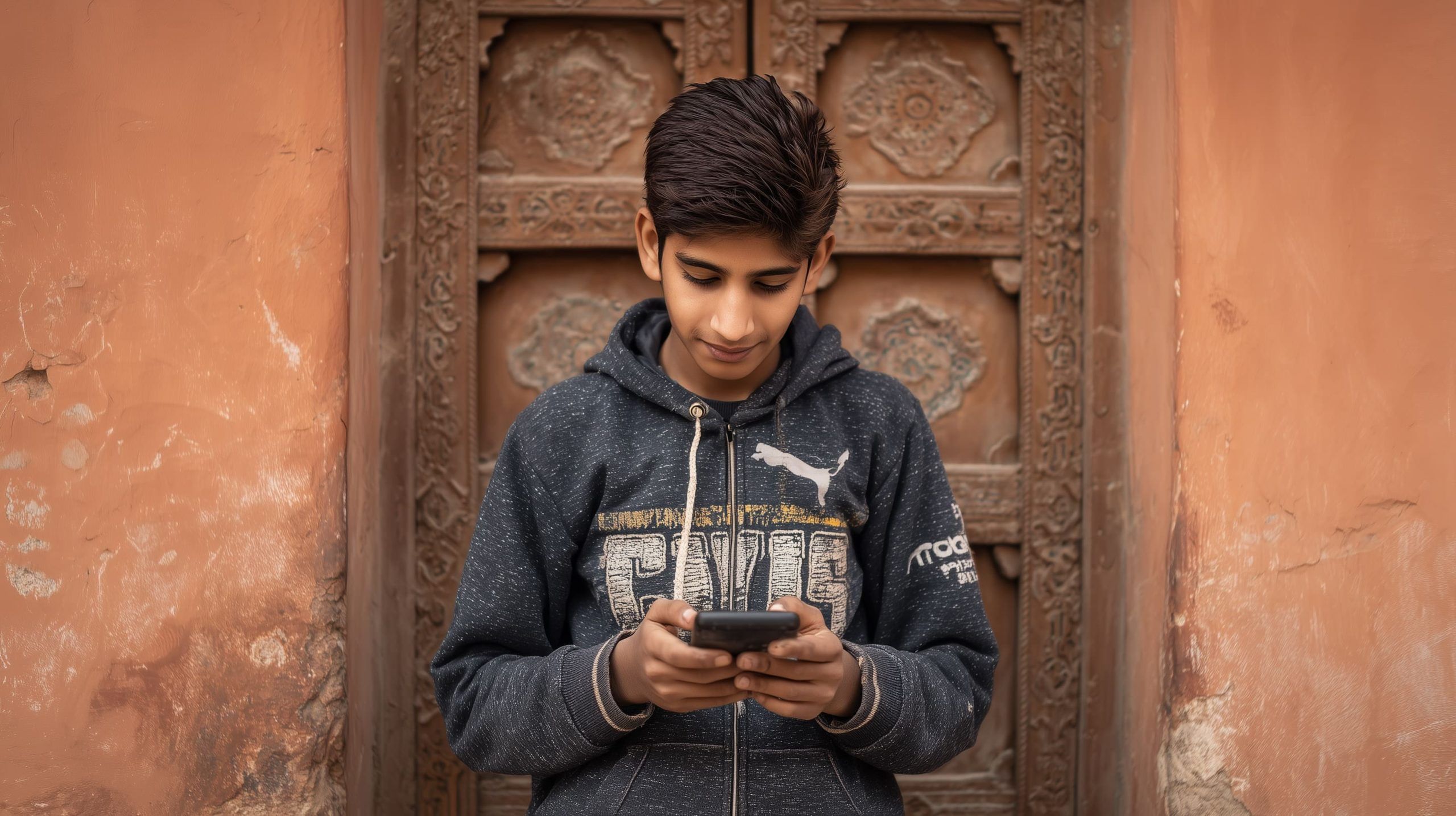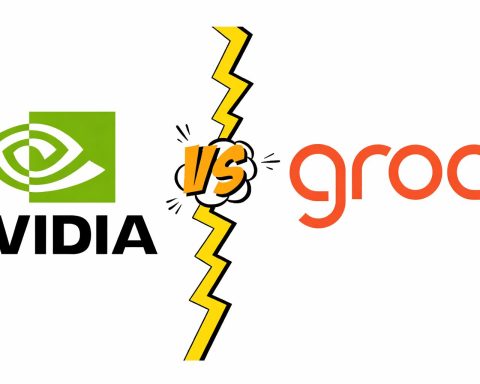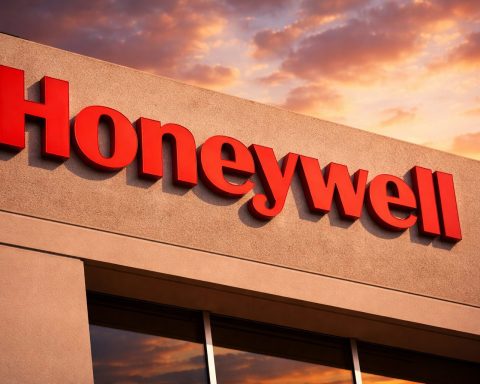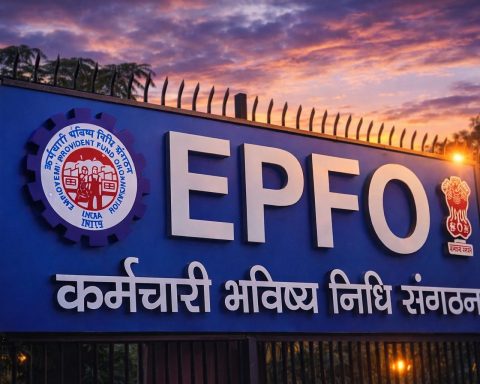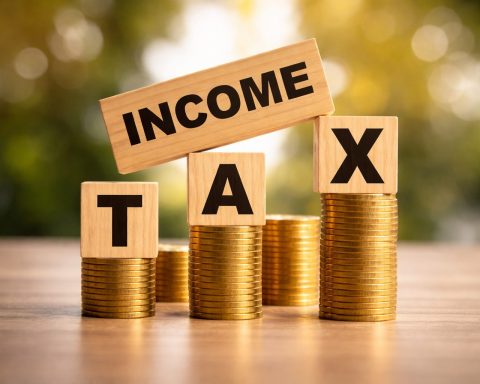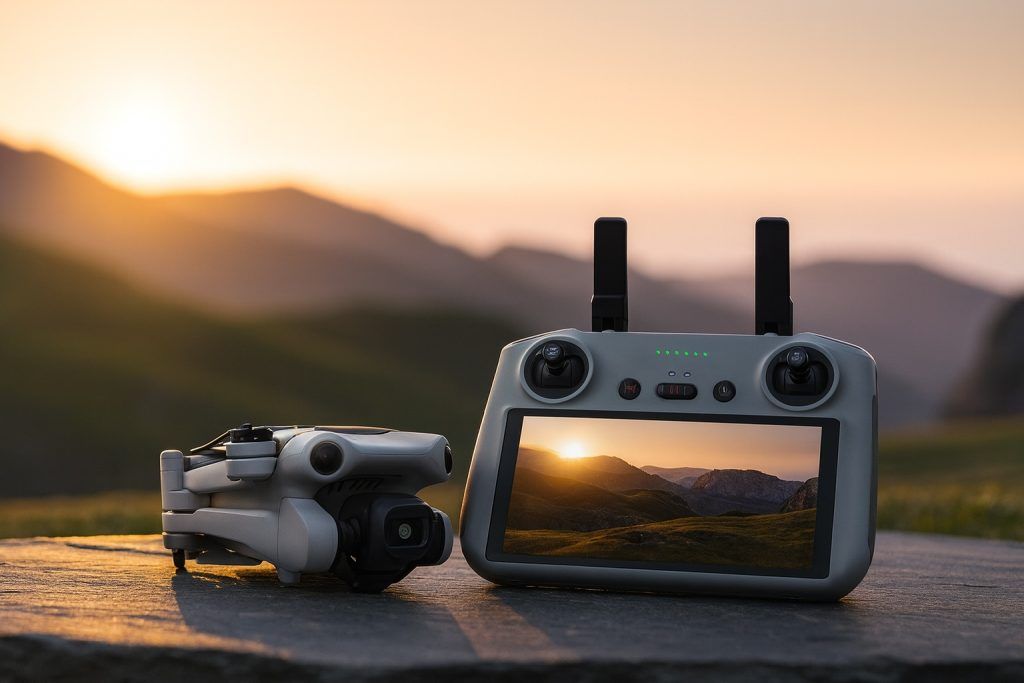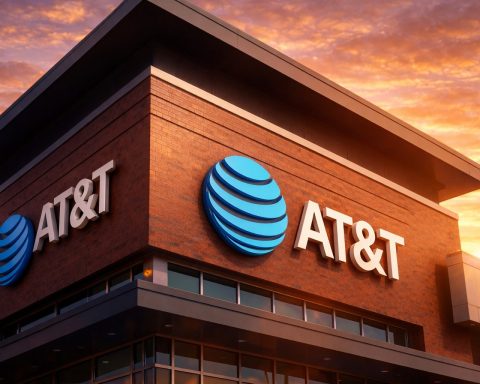- By January 2025, Pakistan had 116 million internet users, about 45.7% of the population.
- By early 2025, Pakistan had 190+ million mobile connections, roughly 75% of the population, with many people using multiple SIMs.
- Fixed broadband penetration remains under 2%, with about 3.6 million fixed subscriptions.
- Fiber backhaul is still limited, with fiber teledensity around 0.45% and only 9–11% of towers fiber-connected, well below a 40% international benchmark.
- Around mid-2024, 4G/3G coverage reached about 81% of the population, and more than 95% of cell sites supported 4G LTE.
- Pakistan has not launched commercial 5G as of 2025, with the PTA planning a 5G spectrum auction for June 2025 and a potential early-2026 launch.
- Starlink has registered a local subsidiary and is expected to launch commercially in 2025 with a monthly price around PKR 25,000 and hardware costs of $400–$500.
- The rural share of the population is about 62%, yet rural internet penetration was only around 36.5% in 2024.
- Jazz (Mobilink) is Pakistan’s largest mobile operator with over 75 million subscribers.
- Pakistan’s national broadband targets aim for 60–65% internet penetration by 2030 and to raise fiberized towers to 40% or more.
Pakistan’s internet landscape is rapidly evolving, marked by significant growth in users but also stark challenges. As of early 2024, over 111 million Pakistanis were online – about 45.7% of the population [1] [2]. By January 2025 this rose to 116 million internet users (45.7% of 253 million people) [3]. Broadband connections (including mobile data) have surged to 142 million by late 2024 [4] [5]. However, roughly half the population remains offline, reflecting a persistent digital divide. This report provides a comprehensive look at Pakistan’s internet connectivity – from the current infrastructure (fiber backbones, mobile 4G networks) and availability in urban vs. rural areas, to major telecom players, usage statistics, government initiatives, and emerging technologies like satellite internet. We also compare Pakistan’s progress with regional and global benchmarks, and examine future outlook and investment opportunities. The picture that emerges is one of high potential – a young, mobile-savvy population driving digital uptake – tempered by challenges in infrastructure, affordability, and equitable access.
Infrastructure: Fiber Optics, Broadband, and Mobile Networks
Pakistan’s internet infrastructure is a mix of expanding mobile networks and limited fixed broadband. Fiber-optic backbone coverage remains relatively thin: fiber penetration is alarmingly low at ~0.45% (fiber “teledensity”) [6]. Only about 9–11% of cellular towers are connected to fiber backhaul, far below the ~40% international benchmark [7]. Most telecom towers rely on microwave links, which can constrain capacity and network quality. The government has begun addressing this by incentivizing fiber rollout (e.g. through the Universal Service Fund projects to lay fiber in underserved districts), but progress is gradual.
Mobile Broadband: Mobile networks are the primary mode of internet access for Pakistanis. The country has four major Mobile Network Operators (MNOs) – Jazz (PMCL), Telenor Pakistan, Zong (China Mobile Pakistan), and Ufone (PTML) – providing 3G/4G services. Collectively, these reach 91% of the population with basic cellular service, and around 81% of the population with 3G/4G coverage as of mid-2024 [8]. In total Pakistan had 190+ million mobile connections in early 2025 (about 75% of the population, many people using multiple SIMs) [9] [10]. Importantly, over 95% of cell sites now support 4G LTE [11], meaning operators have broadly upgraded networks. 4G is prevalent in cities and along major highways, though coverage in remote and rural regions remains spotty. Network maps show dense coverage in urban corridors (e.g. Karachi-Lahore-Islamabad) but large swathes of rural Pakistan have patchy signals [12] [13]. Still, mobile broadband dominates: out of 142 million broadband subscriptions, ~139 million are mobile broadband (3G/4G) versus only ~3.6 million fixed broadband subscriptions [14].
Fixed Broadband: Fixed-line internet (fiber-to-the-home, DSL, cable) has a limited footprint, largely confined to affluent urban neighborhoods. The state-run incumbent PTCL operates the copper DSL network and a growing fiber-to-the-home service (PTCL Flash Fiber), and a few private ISPs (like Nayatel, StormFiber, Transworld) provide fiber or cable broadband in major cities. Even so, fixed broadband penetration is under 2% (only 3.6 million fixed subscriptions in a country of 250+ million) [15]. This indicates that home broadband via fiber or DSL is still a niche – most households, especially in rural areas, have no wired internet access. Pakistan’s vast geography and lower income levels make mobile solutions far more prevalent than laying last-mile fiber or cable. The fiber-optic network itself is improving (Pakistan is connected to at least 8 international submarine cables for global bandwidth [16], with new high-capacity cables like PEACE and 2Africa set to go live by 2025 [17] [18]). As these new undersea cables come online (adding tens of terabits of capacity), international bandwidth and redundancy will increase, alleviating the frequent slowdowns caused by cable faults. Domestically, major fiber routes connect cities, but many remote districts still lack fiber nodes. The government’s “Next Generation Optical Fiber” projects aim to extend fiber backbones into underserved regions, which will eventually improve both fixed and mobile service quality.
4G and 5G Networks: Pakistan launched 3G/4G relatively late (mid-2010s), but 4G adoption has grown quickly – virtually all new subscribers are on 4G. 5G, however, remains on the horizon. Despite earlier targets to roll out 5G by 2023, Pakistan has not launched commercial 5G as of 2025. The 5G spectrum auction has faced repeated delays due to regulatory hurdles, legal disputes over spectrum, and market uncertainties [19] [20]. The telecom regulator PTA tentatively planned the 5G spectrum auction for June 2025, with an eye to a commercial 5G launch in early 2026 [21] [22]. Key hurdles include pending court cases on certain frequency bands and a recently delayed merger of two operators creating uncertainty [23]. In short, 5G is coming, but not imminently – Pakistan is lagging regional peers like India, which began rolling out 5G in 2022 and already has live networks across many cities [24]. In the interim, Pakistani operators continue to enhance 4G capacity to meet growing data demand.
Availability and the Urban–Rural Divide
Internet access in Pakistan starkly reflects the country’s urban–rural divide. About 62% of Pakistan’s population lives in rural areas [25] [26], yet the majority of internet infrastructure and users are concentrated in cities. A 2021 study by Google and Kantar found 66% of internet users were urban vs. only 34% rural [27]. (In large part this is because many rural residents lack coverage or devices, not because urban areas have two-thirds of the population.) Coverage maps underscore that beyond towns and highways, mobile broadband coverage is thin [28] [29]. The main carriers have rolled out 3G/4G along populous corridors (notably the Indus River plain and major roadways) but remote villages, mountainous regions (like parts of Balochistan, Khyber Pakhtunkhwa, and Gilgit-Baltistan), and sparsely populated areas often have only basic 2G service or no service at all.
Even where coverage exists, rural users often face slower speeds and fewer options. Urban residents can choose from mobile data or high-speed fiber in some neighborhoods; rural users might be limited to a single mobile operator’s signal, which can get congested. The Universal Service Fund (USF), a government-led financing program, has been subsidizing telecom operators to expand into rural/under-served areas – funding dozens of new 4G towers and hundreds of kilometers of fiber in the past few years. Through such initiatives, all districts of Pakistan now have some mobile service, and many remote towns are getting 4G for the first time. Still, a significant gap remains in availability: Internet penetration among urban residents is far higher than in rural communities. For example, one survey found 36.5% of people in rural areas used the internet (2024) compared to much higher rates in cities [30].
Electricity and infrastructure challenges also play a role – rural regions suffer more frequent power outages, which can affect network uptime and the ability to charge devices. Many small villages also lack computer centers or digital literacy programs, limiting awareness (discussed more below). The government estimates tens of thousands of villages are still “unserved” or under-served for broadband, representing an opportunity for both terrestrial and satellite solutions to bridge the gap.
Affordability: Costs of Devices and Data
Affordability is a double-edged story in Pakistan. On one hand, mobile data is relatively cheap by global standards. Pakistan meets the UN Broadband Commission’s affordability target – 1GB of mobile data costs around 0.5% of average monthly income, well under the 2% benchmark [31] [32]. In fact, 1GB prepaid plans can be as low as PKR 50–100 (around $0.30), making Pakistan one of the most affordable mobile-data markets in the world in terms of price-to-income ratio [33]. This is partly due to intense competition among the four mobile operators and a “mass market” of low-income consumers – packages are designed to be low-cost (though often limited in volume). The average Pakistani uses mobile internet in a very budget-conscious way, frequently relying on social bundles or night-time packages to stretch their data.
However, device affordability is a major barrier. Buying a capable smartphone is costly for low-income and rural folks. The Alliance for Affordable Internet notes that while data is cheap, a basic smartphone costs over 50% of an average monthly income in Pakistan [34]. For the poorest 20% of the population, a smartphone can equate to several months’ income [35] [36], which is prohibitive. This leads to many sharing devices within families or simply remaining offline. Affordability of smartphones is further hampered by import taxes; Pakistan has levied high duties on handsets in recent years, making new phones more expensive [37]. As a result, there’s a sizable secondary market of used phones, and many low-end Android devices in use.
For those who are connected, ongoing costs (data top-ups) are an issue mainly for the poorest. An entry-level broadband package is affordable relative to average income [38], but for millions living near the poverty line, even a few hundred rupees per month can be a burden. Additionally, Pakistan’s government imposes ~15% GST on telecom services and a further 10% withholding tax on prepaid loads [39], meaning about one-third of what consumers pay for mobile service goes to taxes [40]. The GSMA has cited Pakistan as “one of the highest taxed telecom markets globally” [41]. These taxes disproportionately impact low-income users, effectively raising the cost of access.
In summary, mobile internet in Pakistan is inexpensive on paper, but poverty and high device costs make true affordability a challenge for many. Efforts are underway to produce cheaper local smartphones (some local assembly plants have opened) and to remove the SIM tax on female users in some provinces as a means to narrow the gender gap. The affordability picture is better than many developing countries for data, yet still problematic when considering the ability of all segments of society to get online.
Internet Penetration and Usage Statistics
Internet usage in Pakistan has grown explosively in recent years. As noted, around 45–46% of the population are internet users as of 2024 [42] [43], a big jump up from ~37% in 2022. Pakistan added 24 million new internet users between 2023 and 2024 alone (+27%) [44], one of the fastest growth rates globally. This boom is attributed to expanding 4G coverage, cheaper smartphones, and the pandemic-era digital shift. Total broadband subscriptions (including those with multiple SIMs) at 142 million now even exceed half the population (57% penetration) [45], though the actual share of individuals online is a bit lower (due to many people owning more than one subscription).
Mobile vs. Fixed Use: Unsurprisingly, internet use is overwhelmingly mobile. More than 95% of Pakistani internet users access via mobile phones. In fact, broadband penetration is often measured by the count of 3G/4G subscriptions. Fixed-line internet (PCs with wired connections) is minimal outside offices. Consequently, much of the internet usage is on handheld devices, which influences the type of content consumed (e.g. heavy use of YouTube, WhatsApp, and Facebook). A Google-Kantar study in 2021 found 46% of all Pakistanis accessed the internet every day [46] – highlighting a core of regular users. It also noted YouTube is used by ~90% of internet users, and one-third of users have engaged in e-commerce [47] [48]. Social media usage is also widespread: Pakistan had 72 million social media users in Jan 2024 [49] [50], meaning roughly 65% of all internet users are on platforms like Facebook, TikTok, or Twitter.
Digital Literacy: Overall literacy in Pakistan is around 60–63% [51] [52], and “digital literacy” (ability to use digital tools effectively) is presumed to be lower still. A large portion of new internet users are young people, who tend to be more digitally savvy. In fact, about 64% of Pakistan’s ~140 million internet users are under 30 [53], reflecting how the youth are driving digital adoption. For these users, basic digital literacy (using apps, social media, etc.) is often self-taught or learned informally. However, among older generations and rural communities, there is a significant skills gap – many who have access do not fully utilize it beyond simple messaging or media, and many others stay offline due to lack of know-how or perceived relevance.
The government and NGOs have launched programs to boost digital literacy. One notable initiative is “Internet Dost and Internet Zabardast”, targeting over 100,000 women, youth, and teachers in rural districts with training in mobile and internet use [54] [55]. This project, running 2023–2025, aims to create grassroots digital trainers and “safe, responsible digital citizens” through curriculum and workshops [56]. Such efforts are crucial as surveys indicate that lack of digital skills is among the top barriers to internet adoption in Pakistan [57] [58], alongside affordability.
Encouragingly, awareness of the internet is growing – in many villages, people at least know about the internet even if they aren’t using it. But a 2022 GSMA study found that women and rural residents are significantly less likely to even be aware of mobile internet’s benefits [59]. Bridging this knowledge gap is part of improving digital literacy. The rise of Pakistan’s freelancing sector (the country ranks 4th globally in freelance workforce) is an example of how improved digital skills can translate into economic opportunity [60].
The Gender Gap in Access
No discussion of internet access in Pakistan is complete without addressing the gender divide. Women in Pakistan access the internet at much lower rates than men due to a combination of social, cultural, and economic factors. As of 2020, the gender gap in internet usage was estimated at a whopping 183% – meaning men were almost three times more likely to use the internet than women [61] [62]. While some progress has been made since, the disparity remains one of the highest in the world.
A 2023 survey highlighted that only 50% of women own a mobile phone vs. 81% of men in Pakistan [63] [64]. That translates to roughly 22 million women with no phone at all. And even among phone owners, far fewer women use mobile internet – there are an estimated 12 million fewer women using mobile data services than men [65]. This gap stems from factors like lower income for women (making devices/data less affordable), lower literacy, and societal norms that sometimes discourage women’s tech use. In some households, women’s access to phones is controlled by male family members – a UNDP study noted 83.5% of Pakistani women said their phone ownership or usage was dictated by their spouse or parents [66] [67], an astonishing figure that underscores cultural barriers.
Closing this gender gap is a priority for development organizations. Programs like Internet Dost (mentioned above) specifically focus on training rural women in digital skills [68] [69]. There have also been initiatives to provide subsidized smartphones or data plans for women. Increasing female literacy and workforce participation goes hand-in-hand with digital inclusion. The benefits of bringing more women online are substantial: it can enable women-led businesses (social commerce is rising), improve access to healthcare and education information, and empower women socially. The Pakistani government, in its Digital Pakistan policy, acknowledges the need for inclusive access and has set targets to reduce the gender digital divide. Achieving parity, however, will require addressing deep-rooted social attitudes alongside improving infrastructure and affordability.
Major Telecom Providers and Their Role
Pakistan’s telecom sector is led by a few key players, each contributing to internet expansion:
- PTCL (Pakistan Telecommunications Co. Ltd.) – The former state monopoly on telephony, PTCL owns much of the telecom backbone infrastructure (fiber loops, copper lines) and remains the largest fixed-line and DSL provider. It has around 1.5–2 million broadband customers on DSL/fiber and also operates the country’s largest ISP network. PTCL is also a backbone provider to mobile operators and runs one of the main internet exchange points. Through its cellular arm Ufone, PTCL has ~23 million mobile subscribers (Ufone is the smallest mobile operator but has a presence across the country). PTCL’s ongoing projects include upgrading old copper lines to fiber in urban areas and partnering with IT startups for content delivery networks.
- Jazz (Mobilink) – With over 75 million mobile subscribers, Jazz is Pakistan’s largest mobile operator. It leads in 4G coverage and subscriber share, and has aggressively expanded mobile broadband. Jazz was the first to test 5G in Pakistan (back in 2019 in a limited trial), and it consistently invests in network upgrades. The company (backed by Veon) has also launched fiber-to-the-home in a few cities (branded “Jazz Fiber”) and mobile financial services (JazzCash). Jazz’s network covers 20,000+ sites nationwide and it carries a substantial portion of Pakistan’s mobile data traffic. In coverage mapping, Jazz had the most extensive 4G footprint, including a contiguous coverage belt along the length of the country [70] [71].
- Zong (China Mobile Pakistan) – Zong, owned by China Mobile, has about 45+ million subscribers and is known for its competitive data packages. It was the first to roll out pure 4G (having acquired an early 4G license in 2014) and is often ranked top in speed tests among the operators. Zong has a strong presence in many urban centers and introduced some innovative solutions like 4G-enabled payphones and MBB devices. Its coverage is notable in certain regions: for example, relatively strong in Southern Punjab and Gilgit-Baltistan [72] [73]. As a Chinese-backed company, Zong is expected to be a key player in future 5G deployment.
- Telenor Pakistan – Part of Norway’s Telenor Group, it has around 49 million subscribers. Telenor made big gains in rural telephony in the 2000s and was an early mover in mobile banking (Easypaisa). However, in recent years Telenor has faced challenges in spectrum capacity and network expansion, trailing Jazz and Zong in 4G coverage breadth. The nPerf maps showed Telenor’s 4G presence as relatively sparse in southern Pakistan and focused mainly in the northern half [74]. There have been rumors of Telenor potentially seeking an exit or merger due to tough market conditions, but as of 2025 it remains a major operator. Its role in pushing rural connectivity (through USF projects) has been notable.
- Others: The four above cover the vast majority of internet users. There are also smaller ISP and broadband companies: StormFiber and Transworld provide fiber broadband in select cities; Nayatel is renowned for its fiber network in Islamabad and some other cities, often delivering top-notch service in those areas. These niche ISPs together have a few hundred thousand subscribers and tend to serve affluent neighborhoods with fiber-to-home, offering plans up to 100 Mbps or more. Meanwhile, some provinces (like Gilgit-Baltistan) have seen community-led networks or small telecom operators bridging gaps where big telcos were absent.
Collectively, these providers have driven down prices and introduced new services. They also engage in frequent network upgrades – as evidenced by 95.5% of sites being 4G-enabled now [75], even Telenor (which was slow initially) has nearly all its network on 4G. For the future, these companies are poised to roll out 5G (once spectrum is allotted) and possibly partner with satellite providers to extend reach. Competition is robust in urban areas (where a customer can choose between multiple mobile SIMs and perhaps a fixed ISP), but in rural segments, one carrier might be the only option – which is where further USF projects or new entrants (like satellite broadband) could make a difference.
Internet Speed and Quality: Global Comparison
In terms of connection speeds and quality, Pakistan currently lags behind many countries. According to Ookla’s Speedtest Global Index, Pakistan has one of the slowest internets in the world [76]. As of late 2024, median speeds were reported at ~15.6 Mbps for fixed broadband and ~20.6 Mbps for mobile [77]. This placed Pakistan 141st out of 158 countries in fixed broadband speed, and 100th out of 111 countries for mobile data speed [78]. In other words, Pakistan sits in the bottom 10–15% of global rankings for internet speed [79] [80]. While speeds have improved modestly year-over-year (for example, median mobile download ticked up from ~14.9 Mbps in Jan 2023 to 16.7 Mbps in Jan 2024 [81]), the country remains well below the global average (global median mobile download was ~34 Mbps in 2022 [82] [83], and has risen further since).
There are several reasons for the slow speeds. First, the heavy reliance on mobile broadband means many users share limited cell tower bandwidth, especially in congested areas. As noted, only ~10% of towers have fiber backhaul [84], so most sites use microwave links that can bottleneck data. Second, the limited reach of high-speed fiber to homes/offices means few consumers enjoy the fast connections common in countries with extensive fiber-to-premises. Even in big cities, many internet users are still on copper DSL or wireless 4G with signal issues, capping their speeds.
Pakistan’s internet also suffers from frequent disruptions – cable cuts, power outages, and even intentional shutdowns. In 2022–23 there were multiple instances of nationwide slowdowns due to submarine cable faults. Additionally, the government at times has shut down mobile data regionally for security reasons (e.g. during protests or exams), affecting service quality perception. These issues, combined with the high latency of some international routes, mean that browsing can be frustratingly sluggish for users compared to what is standard in, say, Gulf countries or Europe.
However, improvements are on the horizon. The planned new submarine cable (a consortium including Meta and Vodafone) expected by Q4 2025 will boost Pakistan’s international bandwidth by 24 Terabits and is anticipated to “double the country’s digital capacity” [85]. This should eventually translate into better speeds and reliability. Furthermore, as 4G networks continue to upgrade and as 5G arrives post-2025, mobile speeds should jump (5G could potentially offer 10x the throughput of 4G in ideal conditions). Neighboring countries like India have seen average mobile speeds climb rapidly after 5G introduction [86] – Pakistan might follow suit once its 5G is deployed. For now, though, the average Pakistani internet user experiences far lower speeds than the global norm, which is a competitiveness issue for the digital economy (e.g. slow uploads hurt freelancers and IT exports [87]).
To summarize global context: global internet penetration is about 66% [88], versus Pakistan’s ~46%. Countries like India (55% penetration in 2025) [89] and Bangladesh (44.5% in 2025) [90] are in a similar range, though India has surged ahead on 5G coverage. In broadband speed, Pakistan’s median fixed speed (~13–16 Mbps) pales next to the global median (over 70 Mbps) – top countries like Singapore enjoy 300+ Mbps medians [91]. Regionally, Pakistan also trails countries like Iran or Sri Lanka in speed and penetration, but is ahead of Afghanistan. These comparisons underscore both the progress needed and the opportunity: Pakistan is a large untapped market for connectivity improvements.
Satellite Internet: Starlink and Other Emerging Technologies
One of the most promising developments for extending internet access to Pakistan’s remote areas is low-earth orbit (LEO) satellite internet. In particular, Elon Musk’s Starlink (SpaceX) has generated buzz as it seeks to enter the Pakistani market. Starlink’s satellite broadband could be a game-changer for connectivity in the country’s rugged and underserved regions – if its regulatory and cost hurdles are overcome.
Starlink has been working through Pakistan’s regulatory requirements since 2021. By 2025, it had registered a local subsidiary and sought licenses (like a long-distance international license and 14 regional licenses) [92]. In March 2025, news emerged that Starlink “fulfilled all regulatory requirements” and was set to receive formal approval to operate [93] [94]. Pakistan’s Space and Upper Atmosphere Research Commission and other bodies gave a green light, and the Pakistan Telecommunication Authority (PTA) was expected to issue the final license in 2025 [95] [96]. As part of this process, Pakistan introduced a National Satellite Policy 2023 and Space Activities Rules 2024 to govern such services [97] [98]. Starlink has even conducted pilot tests in Pakistan – including a trial of satellite-to-cell service aimed at eliminating mobile dead zones [99]. This suggests Pakistan could be one of the early adopters of Starlink’s direct-to-phone capability in the future, aside from the standard dish-based service.
Assuming final approvals (No Objection Certificate from PTA, etc.) are granted, Starlink’s commercial launch in Pakistan is expected in 2025. The company has been required to establish ground stations on Pakistani soil to manage its LEO satellites’ traffic locally [100]. This infrastructure, plus compliance with security requirements, has been underway. Once operational, Starlink will offer high-speed internet (50–150 Mbps) beamed from its satellite constellation covering all of Pakistan’s territory – from the highest mountains to deserts. This could particularly benefit remote communities, businesses, and military outposts that currently rely on slow VSAT or have no connectivity.
The big catch, however, is cost. Starlink’s service, while technologically impressive, is expensive for the average Pakistani consumer. Government sources estimate the monthly subscription will be around PKR 25,000 (US$90-100), with a one-time hardware cost of $400-500 (PKR ~120,000) for the receiver kit [101] [102]. This is orders of magnitude higher than the cost of a mobile data package. At these prices, Starlink will not be a mass-market solution in Pakistan initially. It is instead expected to serve enterprises, ISPs, and community hubs – for example, a remote village school or healthcare center could use a Starlink link and share it over Wi-Fi, or a corporate client with operations in a far-flung area might justify the expense. Over time, if costs come down (or if subsidies are provided for certain deployments), more individual consumers could come onboard, but in the near term Starlink will likely be a niche, premium service.
Pakistan is also keeping an open door for other satellite constellations. There are reports that the government might license multiple LEO providers (OneWeb, etc.) to encourage competition [103]. In parallel, the Pakistan Space Agency (SUPARCO) has its own satellites (for communication and remote sensing), but those are geostationary and limited in internet capacity. Another emerging idea is to use High-Altitude Platform Stations (HAPS) or drones to deliver internet in specific areas, though that’s at a conceptual stage.
In addition to satellites, TV white space (TVWS) technology and community Wi-Fi networks have been piloted by researchers to extend rural coverage at low cost. And on the mobile front, the eventual arrival of 5G (with its promised gigabit speeds and low latency) is the other major technological leap on the horizon. The government’s Vision 2025 includes establishing a robust 5G network to drive industries like IoT, smart agriculture, and telemedicine [104]. But until 5G and LEO satellites become mainstream and affordable, Pakistan’s near-term connectivity gains will likely come from incremental improvements to 4G, fiber, and fixed wireless in underserved areas.
Mobile vs. Satellite Internet – A Quick Comparison: Given the interest in Starlink, it’s useful to compare Pakistan’s prevalent mobile broadband with upcoming satellite internet options:
| Feature | Mobile 4G Broadband | LEO Satellite Internet (Starlink) |
|---|---|---|
| Coverage | ~81% of population (mostly urban & peri-urban); gaps in remote areas [105]. | Nationwide blanket coverage (works in any geography with open sky) [106]. Great for rural/isolated spots. |
| Typical Speeds | Median ~16–20 Mbps download on 4G [107]. Peaks up to ~50-100 Mbps in good conditions (4G) but variable. 5G (when launched) could offer much higher speeds. | ~50–150 Mbps download (Starlink standard service). Relatively high throughput consistent across location. Upload ~10–40 Mbps. Latency ~20–50 ms (comparable to 4G). |
| Reliability | Can degrade with network congestion; dependent on tower power/backhaul. Vulnerable to outages if fiber backhaul breaks or during electricity load-shedding. | Generally reliable if clear view of sky; not reliant on local power/infrastructure except the user terminal (requires power). Weather (heavy rain) can slightly affect signal. |
| Cost to User | Very low cost per GB. E.g. 10 GB mobile bundle for ~PKR 300 ($1–2). Device cost ranges from $50 basic phone to $100+ for smartphone. Suitable for low-income users. [108] | Very high cost. ~PKR 25,000 ($90+) per month [109] plus ~$400 hardware kit. No data cap (Starlink offers unlimited data), but cost is prohibitive for average consumer. |
| Ideal Use Cases | Everyday personal use, streaming, social media, urban and rural mobility. Already the go-to for most Pakistanis. | Connectivity in areas with no 4G coverage or extremely poor service; businesses or communities that require reliable link in remote region (mines, farms, border areas). Backup internet for critical operations. |
(Table: Comparison of Pakistan’s prevalent mobile broadband vs. Starlink satellite internet.)
As shown, satellite broadband’s strength is in coverage and speed consistency, making it a powerful tool to connect Pakistan’s hardest-to-reach locales. But mobile broadband will remain the affordable workhorse for the majority.
Government Policies and Regulatory Landscape
Pakistan’s government recognizes the importance of digital connectivity and has introduced various policies and initiatives to boost internet access:
- Digital Pakistan Policy (2018 & 2021): A comprehensive framework aiming to broaden internet access, promote digital skills, e-government, and tech entrepreneurship. It set targets for broadband penetration and called for infrastructure development, including facilitating 5G and public Wi-Fi. While lofty in goals, implementation has been mixed due to political changes and economic constraints.
- Telecom Policy and Regulatory Measures: The Pakistan Telecommunication Authority (PTA) is the regulator overseeing spectrum, licensing, quality standards, and consumer protection. PTA has conducted spectrum auctions to enhance 4G services (most recently in 2021) and is preparing for the 5G auction. The regulator also monitors Quality of Service; in 2023 it flagged that some operators were underperforming in certain regions [110], nudging them to improve. On the licensing front, PTA in recent years allowed new niche licenses (like for satellite providers) and approved manufacturing licenses that enabled local assembly of smartphones (Samsung, Xiaomi and others have set up plants, which should eventually reduce device costs).
- Universal Service Fund (USF): This is a key government arm addressing the digital divide. Funded by a small levy on telecom revenues, USF subsidizes telecom projects in unserved areas. In the last five years, USF has rolled out dozens of rural mobile broadband projects and fiber-optic projects in all provinces [111] [112]. For instance, recently USF approved PKR 7.5 billion for 4G networks in 10 districts (covering nearly a million residents in 347 remote villages) and new fiber routes of ~940 km in Sindh and Punjab [113] [114]. These projects are gradually chipping away at the rural connectivity gap. The USF also focuses on Balochistan and tribal areas, which had been left far behind. As a result, even some sparsely populated border regions now have 3G/4G where there was none before.
- National Broadband Targets: The government has set a target to reach 60–65% internet penetration by 2030 [115]. It also aims to increase the fiber footprint (for example, increasing the percentage of fiberized towers to the global benchmark of 40% or more). There is an emphasis on “future-proofing” infrastructure by encouraging fiber-to-the-home in new housing developments and promoting infrastructure sharing among telecom operators to reduce costs.
- Inclusion and Literacy Programs: Aside from infrastructure, government initiatives like the one in partnership with NRSP (Internet Dost program) address digital literacy (especially for women and rural youth) [116] [117]. The aim is to ensure once infrastructure is in place, people can actually make use of it. Additionally, the government has rolled out some e-governance services (e.g. online citizen portals, digital payment systems) to create demand and show the utility of internet access.
- Regulatory Challenges: The policy environment has some pain points. High taxation on telecom has been criticized – while the government did remove the 10% advance income tax on mobile top-ups for a period, it was later re-imposed due to revenue needs. Spectrum pricing is another issue; operators have repeatedly asked for price cuts and easier terms for new spectrum, arguing that expensive spectrum in a low-ARPU market slows network investment. The regulatory approval process for things like satellite services was also initially cumbersome (Starlink’s licensing took over 2 years), though frameworks are now in place [118]. Another aspect of the regulatory landscape is internet content controls – Pakistan has at times blocked certain websites or apps (YouTube in the past, TikTok temporarily, and more recently curbs on VPN usage were discussed). While primarily a freedom of expression issue, such actions can also affect user experience and perceptions of internet reliability. PTA in 2025 clarified that no VPNs have been blocked and there’s no plan to do so after public concern [119] [120], indicating the balancing act regulators play between security and openness.
Overall, Pakistan’s policy direction is supportive of expanding connectivity, but execution is key. Continued economic struggles (debt, currency devaluation) can limit funding for digital projects and make imported equipment costlier. Yet, initiatives like CPEC (China-Pakistan Economic Corridor) also present opportunities – for instance, fiber optic cables are being laid along the new transport routes to connect Pakistan with China, which can enhance northern areas’ connectivity and provide an alternate internet route.
The regulatory landscape will need to remain conducive to investment: ensuring healthy competition, fair spectrum allocation, and incentives for rural reach. If upcoming moves – like the 5G launch, satellite licensing, and further tax rationalization – are handled well, they could significantly accelerate Pakistan’s journey toward a digitally connected society.
Challenges and Opportunities Ahead
Pakistan’s internet story thus far has been one of catch-up and untapped potential. Key challenges persist:
- Digital Divide: There is a clear divide not only between urban and rural areas, but also across provinces and income groups. A recent National Human Development Report mapped digital development levels by district and found a highly unequal range – only a few districts (Lahore, Rawalpindi, Karachi, Islamabad) are in the high category, while many rural districts in Balochistan, Khyber Pakhtunkhwa and Sindh are very low [121] [122]. This uneven progress means some communities enjoy gigabit fiber and app-based services, while others struggle to get a basic email. Closing this gap will require focused efforts (like USF projects, local content in regional languages, and affordable access programs for the poorest).
- Economic Constraints: The overall economy’s health directly affects internet expansion. High inflation and currency depreciation have raised the cost of network equipment and smartphones (since most are imported). Telecom operators in Pakistan operate on low margins (average revenue per user ~PKR 300, or just $1.00-1.50/month [123] [124]) which limits their capacity to invest heavily in new towers or tech. The industry has lobbied for relief such as lower taxes and electricity tariffs for tower sites. If the business case improves, we could see more rapid network rollout – if not, there’s risk of stagnation in quality or coverage. On the flip side, digital sectors like e-commerce and IT exports are growing fast (IT exports hit $3.1B in FY2023 [125]), which might spur more private investment in robust connectivity.
- Geography and Terrain: Pakistan’s terrain includes some of the toughest on earth – from the Himalayas and Karakoram in the north to vast deserts and sparse highlands in the west. Laying fiber or maintaining cell sites in these areas is challenging and expensive. Many regions can also be cut off by floods or landslides. Here, solutions like satellite internet and microwave relays are critical. The challenge is to build a resilient network that can withstand natural disasters (Pakistan has experienced major internet disruptions due to submarine cable cuts or infrastructure damage; improving redundancy is important).
- Power Supply: Consistent electricity is needed for telecom infrastructure, and Pakistan’s power grid is itself prone to outages. Telecom towers often have battery backups or generators, but prolonged power cuts can still knock sites offline or degrade service (especially in rural areas where backup is limited). Addressing the energy crisis (via solarizing tower sites, etc.) is indirectly a need for better internet uptime.
Despite these challenges, the opportunities are immense:
- Untapped User Base: With roughly 130 million Pakistanis still offline [126] [127], the market for new internet users is huge. As device costs gradually fall and networks inch outward, there is a vast cohort of potential new users – particularly women, rural youth, and older citizens – who represent fresh demand for services. This “next half” of the population coming online could drive a new wave of economic activity (much as the first phase of internet growth enabled startups, e-banking, and digital media boom).
- Youth and Entrepreneurship: Pakistan’s median age is just around 20. The young, digitally native generation is quick to adopt new technologies. We already see globally competitive freelancers, influencers, and tech startups coming out of Pakistan’s connected population. With better internet access, this talent pool can grow further, contributing to the economy and innovation. The fact that Pakistan is 4th in freelance earnings globally, despite relatively slow internet, speaks to the potential when connectivity improves [128].
- Digital Economy Growth: The digital economy (e-commerce, fintech, IT services, digital media) is growing at ~20%+ CAGR, reaching an estimated $12–15 billion in 2023 [129]. Projections suggest it could hit $60–75B by 2030 [130]. Achieving this will depend on expanding high-speed internet coverage and usage. Sectors like online retail, e-health, digital education, and cloud services all need reliable broadband and wide user reach. Investors (local and foreign) are eyeing this space – evidenced by recent venture funding in Pakistani startups and interest from big tech companies in the user base. If connectivity continues to improve, Pakistan could become a major emerging digital market.
- Foreign Investment in Infrastructure: There is opportunity for investment in fiber networks, data centers, and new technologies. Chinese firms under CPEC have already invested in fiber links; Western tech giants (like Facebook/Meta and Google) indirectly are investing by financing submarine cables that land in Pakistan [131] [132]. Further, if Pakistan’s economy stabilizes, we could see the telecom sector consolidate or attract new strategic partners (e.g., Etisalat owns PTCL, Telenor has foreign backing – future 5G may involve partnerships for capital and expertise). The satellite segment too could see competition beyond Starlink, perhaps with OneWeb or regional satellite operators partnering locally.
In essence, Pakistan stands at an inflection point in its internet journey. The last decade took internet penetration from single digits to nearly half the population. The next few years – with the advent of 5G, entry of satellite broadband, and continued fiber expansion – could bring the next half of the population online, unleashing substantial socio-economic benefits. Realizing this promise will require sustained focus on infrastructure investment, pro-poor pricing and policies, and a commitment to inclusive access so that no region or group is left behind.
Conclusion
Pakistan’s internet access landscape is one of rapid progress tempered by persistent gaps. On one hand, tens of millions have come online in just the past couple of years, mobile broadband covers four-fifths of the populace, and digital services are flourishing in urban centers. On the other hand, large rural areas remain disconnected or underserved, and many Pakistanis – especially women and the poor – still find internet access either unavailable, unaffordable, or unattainable due to skills barriers. The current infrastructure is dominated by mobile 4G networks, which have successfully brought basic connectivity across the country, but now need upgrades (fiber backhaul, 5G) to deliver the next level of speed and reliability. The fixed broadband segment, while small, is gradually growing via fiber-to-the-home in cities.
Major telecom operators like PTCL, Jazz, Zong, Telenor, and Ufone have been at the forefront of this expansion, competing to roll out coverage and introduce new services. Government initiatives and policies have laid a helpful foundation – from the USF’s rural projects to a welcoming stance on new technologies like LEO satellites – yet there is much work ahead to achieve universal, high-quality internet access. Key challenges such as the urban-rural divide, gender gap, high taxation, and infrastructure deficiencies must be addressed with urgency and innovative solutions.
Looking forward, the convergence of emerging technologies offers hope. The anticipated arrival of 5G in 2026 and Starlink’s satellite internet by 2025 could dramatically extend and enhance connectivity if managed well [133] [134]. New submarine cables and fiber corridors will bolster the network’s backbone capacity [135] [136], hopefully ending the days of sluggish speeds and frequent outages. Pakistan’s youthful population is eager to embrace the digital world – we can expect demand for streaming, e-commerce, online education, and remote work to keep rising. If stakeholders can capitalize on the opportunities and overcome the hurdles, Pakistan is poised for a digital transformation that will not only connect its people to the world, but also unlock a “trillion-dollar” economic potential in the coming decade [137] [138].
In summary, Pakistan’s internet access evolution is at a pivotal stage: the foundations have been laid, the future is beckoning – and with strategic investments and inclusive policies, the goal of a connected Pakistan for all is within reach.
Sources: The information in this report is drawn from a range of up-to-date sources, including DataReportal’s “Digital Pakistan” statistics [139] [140], official PTA reports [141] [142], news coverage from Dawn and Business Recorder on internet speeds [143], infrastructure, and initiatives [144] [145], as well as statements on forthcoming technologies like 5G and Starlink [146] [147]. These citations highlight the current status and trends of internet connectivity in Pakistan as of 2024–2025, underpinning the analysis provided.
References
1. datareportal.com, 2. datareportal.com, 3. datareportal.com, 4. www.app.com.pk, 5. www.app.com.pk, 6. www.brecorder.com, 7. www.brecorder.com, 8. www.app.com.pk, 9. datareportal.com, 10. datareportal.com, 11. www.app.com.pk, 12. www.brecorder.com, 13. www.brecorder.com, 14. www.app.com.pk, 15. www.app.com.pk, 16. www.submarinenetworks.com, 17. www.thenews.com.pk, 18. propakistani.pk, 19. samaa.tv, 20. samaa.tv, 21. samaa.tv, 22. samaa.tv, 23. samaa.tv, 24. www.brecorder.com, 25. datareportal.com, 26. datareportal.com, 27. tribune.com.pk, 28. www.brecorder.com, 29. www.brecorder.com, 30. ts2.tech, 31. adi.a4ai.org, 32. adi.a4ai.org, 33. adi.a4ai.org, 34. adi.a4ai.org, 35. www.gsma.com, 36. www.gsma.com, 37. www.brecorder.com, 38. adi.a4ai.org, 39. www.brecorder.com, 40. www.brecorder.com, 41. www.brecorder.com, 42. datareportal.com, 43. datareportal.com, 44. datareportal.com, 45. www.brecorder.com, 46. tribune.com.pk, 47. tribune.com.pk, 48. tribune.com.pk, 49. datareportal.com, 50. datareportal.com, 51. www.brecorder.com, 52. www.brecorder.com, 53. www.brecorder.com, 54. www.dawn.com, 55. www.dawn.com, 56. www.dawn.com, 57. www.gsma.com, 58. www.gsma.com, 59. www.gsma.com, 60. www.brecorder.com, 61. adi.a4ai.org, 62. adi.a4ai.org, 63. www.dawn.com, 64. www.dawn.com, 65. www.dawn.com, 66. www.brecorder.com, 67. www.brecorder.com, 68. www.dawn.com, 69. www.dawn.com, 70. www.brecorder.com, 71. www.brecorder.com, 72. www.brecorder.com, 73. www.brecorder.com, 74. www.brecorder.com, 75. www.app.com.pk, 76. www.dawn.com, 77. www.dawn.com, 78. www.dawn.com, 79. www.dawn.com, 80. www.dawn.com, 81. datareportal.com, 82. www.gsma.com, 83. www.gsma.com, 84. www.brecorder.com, 85. www.geo.tv, 86. www.brecorder.com, 87. www.dawn.com, 88. datareportal.com, 89. datareportal.com, 90. datareportal.com, 91. www.dawn.com, 92. digitalpakistan.pk, 93. www.brecorder.com, 94. www.brecorder.com, 95. www.brecorder.com, 96. www.brecorder.com, 97. www.brecorder.com, 98. www.brecorder.com, 99. www.brecorder.com, 100. www.brecorder.com, 101. www.brecorder.com, 102. www.brecorder.com, 103. pakalumni.com, 104. samaa.tv, 105. www.app.com.pk, 106. www.brecorder.com, 107. www.dawn.com, 108. adi.a4ai.org, 109. www.brecorder.com, 110. tribune.com.pk, 111. tribune.com.pk, 112. www.usf.org.pk, 113. profit.pakistantoday.com.pk, 114. tribune.com.pk, 115. www.brecorder.com, 116. www.dawn.com, 117. www.dawn.com, 118. www.brecorder.com, 119. www.app.com.pk, 120. www.app.com.pk, 121. www.brecorder.com, 122. www.brecorder.com, 123. www.app.com.pk, 124. www.app.com.pk, 125. www.brecorder.com, 126. datareportal.com, 127. datareportal.com, 128. www.brecorder.com, 129. www.brecorder.com, 130. www.brecorder.com, 131. www.thenews.com.pk, 132. propakistani.pk, 133. samaa.tv, 134. www.brecorder.com, 135. www.geo.tv, 136. www.thenews.com.pk, 137. www.brecorder.com, 138. www.brecorder.com, 139. datareportal.com, 140. datareportal.com, 141. www.app.com.pk, 142. www.app.com.pk, 143. www.dawn.com, 144. www.brecorder.com, 145. www.brecorder.com, 146. samaa.tv, 147. www.brecorder.com
